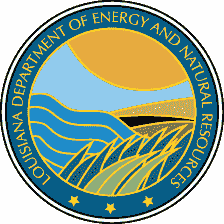Top Stories
EPA Grants Louisiana Office of Conservation State Authority Over CO2 Injection and Sequestration
BATON ROUGE, La. – Today, Gov. John Bel Edwards and Louisiana Department of Natural Resources (DNR) Commissioner of Conservation Monique M. Edwards announced the U.S. Environmental Protection Agency (EPA) has formally granted Louisiana state primacy in the permitting and regulation of wells and projects involving the underground sequestration of carbon dioxide (CO2). This is widely seen as one of the primary tools in delivering cleaner production and use of traditional fuels and industrial feedstock.
Gov. Edwards and Commissioner Edwards (no familial relation) expressed their appreciation to both U.S. EPA headquarters and EPA’s Region 6 office for their spirit of cooperation throughout the process and for their work in reviewing the thousands of comments given during the public comment period over the past several months.
Permitting of such wells and operations, known as Class VI permits, is generally directly regulated by the EPA, though the EPA can grant primary regulatory authority to individual states that develop a regulatory framework that matches or exceeds the EPA’s Class VI standards, as is now the case in Louisiana’s Office of Conservation.
Gov. Edwards said that Louisiana’s geology and existing base of industry and pipeline infrastructure position the state to be a major player as a hub for Carbon Capture and Sequestration (CCS) projects, enabling industry to shrink its carbon footprint in a global market that is ever more carbon sensitive.
“Finding alternative means of harnessing our traditional fuel sources at the same time we expand our options for alternative fuel sources to the point they are market-ready, available and affordable is probably the great challenge of our generation and some of the most important work we can do for future generations,” Gov. Edwards said. “While CO2 sequestration is not the only strategy available for carbon management, it is the most mature and market-ready tool available in the near term.”
CO2 sequestration involves use of injection wells to store CO2 deep below ground, under confining layers such as shales that prevent upward migration of what is injected. Regulations deal with issues such as thickness of the confining layers, potential for horizontal migration, appropriate well construction, monitoring requirements and financial security requirements, among other issues.
After the state Legislature made an adjustment to state law in 2019 to bring it in line with federal requirements, the Office of Conservation’s Injection and Mining Division (IMD) worked on preparing a package of CO2 sequestration regulations for about two years. That work included a painstaking review of all existing and proposed state regulations on CO2 sequestration in comparison to federal requirements.
The Office of Conservation made those state rules official in January 2021, a package of regulations that exceeds the EPA requirements in several areas, including:
- Louisiana will not grant waivers to injection depth requirements
- Louisiana prohibits sequestration of CO2 in salt caverns
- Louisiana will not issue area permits for multiple wells at once, requiring each individual well to be reviewed and permitted on its own
- Louisiana requires additional measures for monitoring systems and operating requirements
“We certainly want Louisiana to be able to develop opportunities for economic growth in the emerging market for carbon management,” Commissioner Edwards said. “But we cannot and will not sacrifice our duty to ensure that operations are conducted in a way that is protective of public safety and the environment.”
Commissioner Edwards said her office will be reaching out to EPA Region 6 to discuss handover of the more than 20 Class VI applications for Louisiana that have already begun the permitting process with the EPA.
“We have seen unprecedented interest in carbon sequestration projects over the past couple of years, with companies reaching out to our office to express interest in what the regulatory landscape will be,” Commissioner Edwards said. “The applications already in with the EPA are just the start.”
The Office of Conservation has also created a web page to provide more information on the Class VI regulatory process and to track ongoing projects as applications are submitted.
###
News Archives »